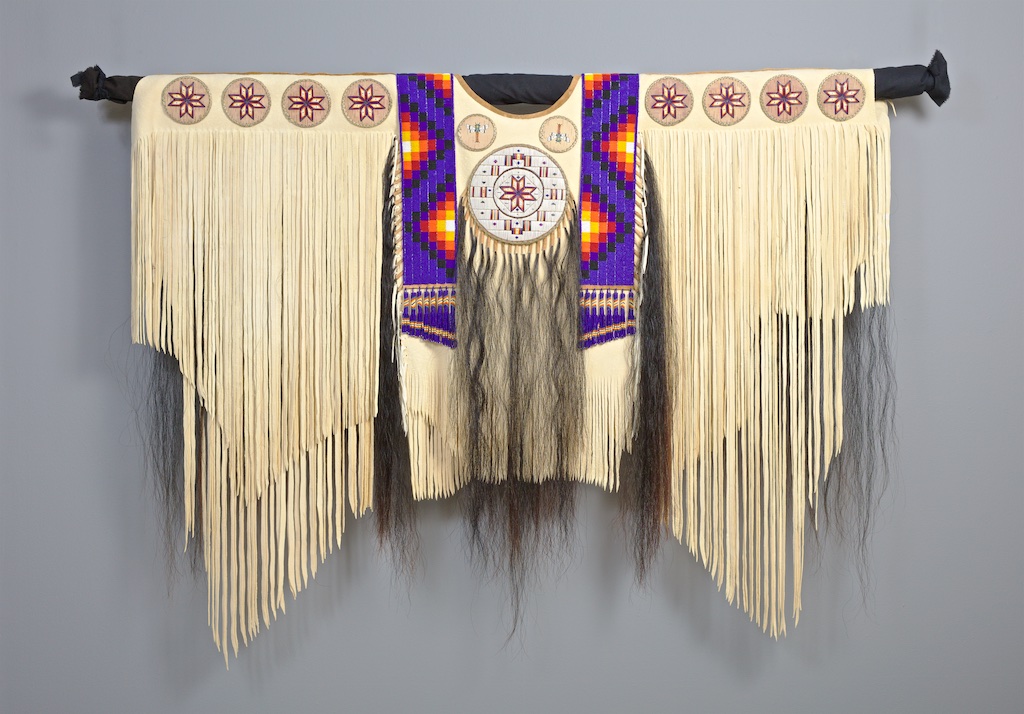
Through May 15, 2022 | Nelson Case
Many of the collection regalia in this display are from the Richard E. and Dorothy Rawlings Nelson Collection of American Indian Art, donated by Richard E. “Dick” Nelson in 2007. Over a period of thirty years, the Nelsons acquired a significant collection of contemporary and historical art by Native artists, and the gift from Dick Nelson included works predominantly made by Great Lakes Native peoples. In recent years the Tweed purchased works from featured artists Orvilla Longfox, Irene Losh, Melvin Losh, Marcie McIntire, Joe Savage, Chholing Taha, Delina White, and Dennis White. For this display, the Tweed also generously received regalia on loan from esteemed Artist/Curator/Educator Wendy Savage and her sister, Dr. Lisa Savage.
The term regalia refers to the clothing Native people wear for ceremonies, powwows, and other special events. While ceremonies and the idea of social gatherings in the form of today’s powwow have existed for centuries, there are several fundamental dance categories with their own style of regalia: men’s traditional, women’s traditional, men’s grass dance, women’s jingle dress, men’s fancy, and women’s fancy shawl. Depending on the region, there may be additional categories. While the dance outfits in this display may not be complete, they demonstrate some of what has been worn at powwows in different eras and generations.
In a recent interview with Lac Courte Oreilles Ojibwe elder Lewis White, who has been dancing in powwows since the mid-1950s, he said this about the significance of dance regalia:
“When I was nine years old, I only had a set of bells [for my ankles] and felt good about it. I remember some of those old guys who just loved to dance. They had simple appliqué shirts, leggings, and bells and moccasins, and others had more elaborate beadwork. They never really thought about how they looked; they just wanted to dance and were so happy. Eventually, as a teenager in the early 1960s, I learned to bead and make feather bustles for my own regalia, but I also wore things given to me or bought for me.”
At powwows, Native people dance with immense pride because they are wearing regalia representing their cultures and communities as well as their personal identities. It is a joyous occasion to be in one’s own individual style of regalia, and there is always an appreciation for every single piece. Many would agree with White, who stated: “I always felt proud of everything I’ve worn over the years. It’s an honor to dance.”